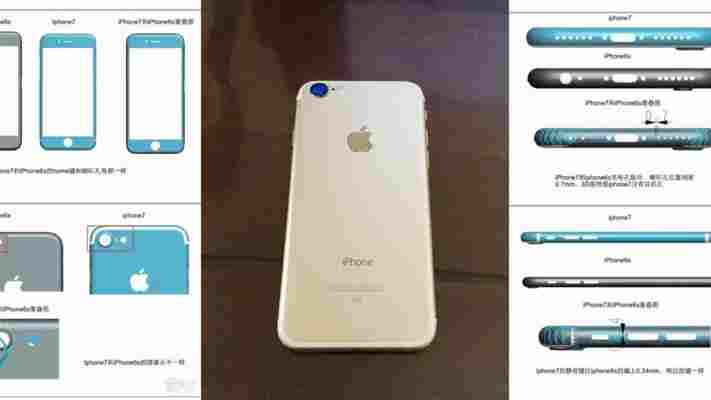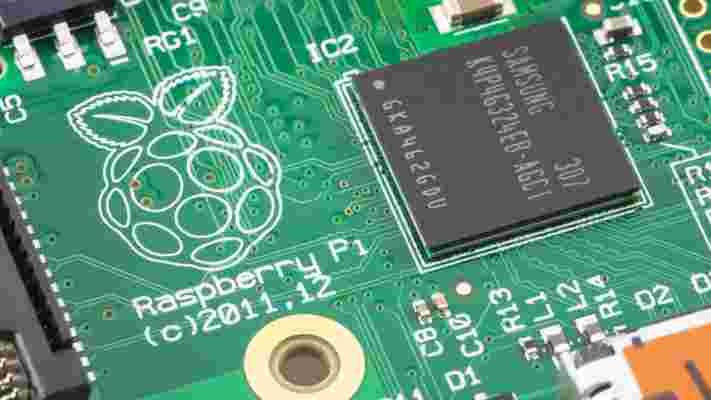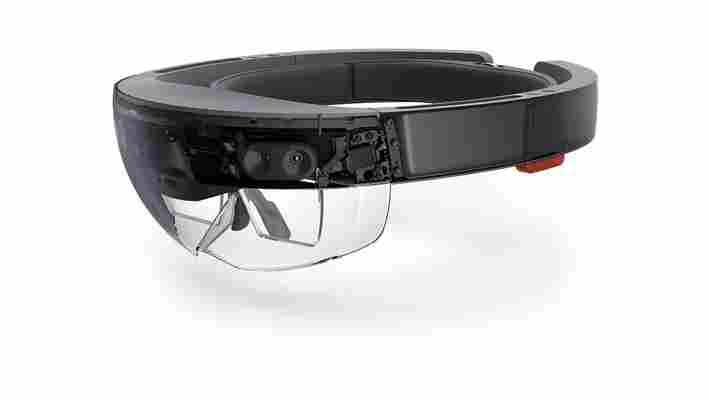iPhone 7 leak shows a shorter, chubbier device you may actually like
As the iPhone 7 launch draws closer, rumors and leaks start piling up. Those leaks also get a bit more stable as time wears on, and the latest makes us think we may actually be looking at the iPhone 7 in the flesh.

Over at techtasticl, a spy shot of the iPhone 7 body has been posted alongside some schematics claiming to detail the overall dimensions of the next iPhone.
If techtastic is right, We’ll see a larger camera around back that is slightly larger than what you find on the iPhone 6 and ’S’ variants. It’s also a bit closer to the top edge of the phone, suggesting a significant internal redesign of how components fit into the device.
The antenna lines that currently peel around the rear of the device are gone. Instead of the eye-catching (not in a good way, either) lines on the rear of your device, we’re seeing cutouts that roll alongside the curvature of the phone itself.
The schematics are also interesting. They show a side-by-side comparison to the iPhone 6S, which has the iPhone 7 a bit shorter than the current flagship.
It’s also a touch chubbier: 7.15mm compared to 7.1mm. If you think you may be able to get away with reusing the case from your 6S — think again. The iPhone 7 in these schematics is also a bit narrower.
It matches — almost exactly — previous leaks. It seems that in production, leaks are starting to pour out of the supply chain.
Rather than assume the iPhone 7 is just a refreshed iPhone 6S as some are asserting, the schematics assert it’s actually a bit different. It doesn’t detail the massive refresh some were expecting, but it’s just different enough to make us think Apple is doing more than reiterating on the 6S.
Techtastic also has a decent track record of leaks coming from Apple’s supply chain.
Deja vu time: it matches — almost exactly — previous leaks.
It’s entirely possible some clever soul decided it would be fun to jump on the bandwagon and create their own fake leak. The image itself is nice, but a bit grainy — and it’s not as if photo editing software is hard to come by (or use).
We’re also not clear on whether or not a comparison chart is standard fare. It also points to an accessory manufacturer as the source of the leak, and many of them don’t get access to the device until the rest of the world.
A bit more narrow, a touch shorter and a change in thickness you won’t be able to notice? Sign me up.
Of course, we won’t know until later this year when Apple introduces us to the iPhone officially how accurate this (or any) leak is, but it feels like things are starting to round into shape.
How TNW creates a smart office experience with Raspberry Pi
At The Next Web (TNW), we’re excited about technology finding a way into every aspect of our lives. Today, we’d like to share how we’ve integrated gadgets, apps and custom code into our office(s) to help improve productivity and make work easier.

Using the low cost, credit card-sized Raspberry Pi, the project is led by Otto Rottier, lead developer at Index, which is part of TNW. Here’s how far we’ve come.
A little backstory
It all began in January 2016, when our UX designer colleague at Twitter Counter suggested integrating our office playlists into Slack.
Adopting an open plan office layout, we have been using Sonos as our music player and Slack as our company-wide communication platform. The initial idea was to integrate the two technologies so that people could request a song via Slack.
Since it wasn’t possible to communicate with Sonos using a random server outside of the office, we decided to build a small server internally. At first, we hosted the project on one of our team member’s laptops. It was convenient – but only when he was at the office. To fix that, we decided to use a Raspberry Pi that we could keep around the office and run without him.
Current Projects
Sonos-Slack integration You might wonder, ‘why on earth would they want to request a song via Slack? Why not simply install the client app and be done with it? There’s actually been some frustration over how music is managed on our Sonos system. Sometimes, a song that someone adds to the current playlist is skipped over by a colleague or the entire playlist doesn’t suit the majority’s taste, hindering their work performance and killing the vibe. By ensuring that no one can use the Sonos app anymore and their control is limited to two operations (adding songs and downvoting them), the music management would be a lot fairer for everybody. This can be achieved by connecting Sonos to a private part of the Wi-Fi network that can only be accessed by selected devices, which in this case is the Raspberry Pi. The #whats-playing channel on TNW Slack Slack’s role here is mainly for receiving command like /pause , which is useful if you are having a call with a client, /play to replay the paused song, /queue to add a song to the current playlist, and /say to make Sonos pronounce the text that you type into Slack. Obviously, the last command was just for fun. Although the private access and the commands are yet to be implemented, we can now already see what’s playing on our Sonos via the Slack channel #whats-playing. Another Sonos-related project that was already implemented was the auto lunch tune. Twice a day at every 12.00 am and 12.30 pm, Lunch Time by DJ Party Jr . is played. Although Slack is not involved here, the Raspberry Pi ‘talks’ to Sonos via the Sonos HTTP API .
Auto Check-In This is probably the most important Raspberry Pi project at TNW to date. It is mandatory for all employees at TNW to check-in via the tablet at the reception desk or Slack command /checkin for safety reasons. If you skip it, you don’t get to have lunch (sort of). Everyday, employees are sorted into two lunch shifts, the early 12.00 pm – 12.30 pm shift and the late 12.30 pm – 13.00 pm shift. The algorithm will sort this randomly and announce it when someone inputs the /lunch command on Slack. If you don’t check-in, your name won’t appear in any of the shifts. To improve this process, a TNWer had an idea to install a proximity-sensing beacon. We then used Raspberry Pi as the beacon and programmed it to identify people as they connect to the office network and check them in automatically. Auto check-in dashboard Auto check-in notification bot To make it work, an employee must register their device’s physical address on Kantoortuin , our local server. Once registered, every time someone connects to the office network, our local server will communicate to the check-in tablet at the reception desk and to Slack so that they won’t miss the lunch. Here is the code that we use for the auto check-in. This auto check-in project later inspired a few other small features such as a Slack notification when Boris, our CEO enters the office. Knowing how many people each day would like to meet with Boris, this small add-on has come in handy. In the future, we may even play a specific song every single time Boris arrives at work. Boris at the office (maybe)
Future Projects
Groceries integration Every once or twice a week, we stock up on coffee beans, healthy snacks, and yes, junk foods and whatnot. The challenge for us is figuring out what we’re running low on and only ordering those items. To counter this problem, we’ll need a barcode scanner. The barcode scanner will be connected to the Raspberry Pi, which potentially will be attached to the kitchen wall. If we see any food or drink running out, we can scan the barcode and the Raspberry Pi will compile the orders and send that information via Slack to whoever’s in charge of a grocery run. The most efficient way we thought of was to send the information directly to the supermarket. Unfortunately, the supermarket we usually get the groceries from doesn’t have a public Application Programming Interface (API) ready. Until then, we’ll have to bear with our first world problem.
Company dashboard A dashboard shown on a big TV screen will display all kinds of info that’s essential to TNW employees. It could show a stream of the latest articles on our site, when the next nearby public transportation arrives, weather, Wi-Fi password, and more. Our Raspberry Pi will count on service providers’ APIs to fetch the necessary information. This project is still on our to-do list, and we hope to get cracking on it real soon. Credit: Freek Van der Herten / murze.be Spatie’s dashboard – how we envision our dashboard would look like
Plan your cocktail Every Friday evening, volunteers from our company hold a customary cocktail gathering. Currently, we have to put our names down on a Google Sheet to indicate that we’re willing to host, and sometimes, we’ll ask people about who’s going to take on the task that week. The idea is to show on Slack which Friday slots are available for everyone to grab a drink, and send a Slack message indicating who will be hosting our cocktail party on the upcoming Friday. If no one fills in the slot for the upcoming gathering, it will send a notification to all of us that no one has claimed the slot yet. This negates the need to rely on a spreadsheet.
Here at TNW, we’re always looking for ways to make our daily work routines simpler, smarter, and definitely more fun. That is why we are always open to new ideas on what and how we can improve our working experience. After all, we spend most of our waking lives at this place.
One thing you can take away from this post is, don’t hesitate to innovate and make your life better wherever possible. The things you do daily, like checking in, or making a shopping list, things that annoy you that can be automated – that’s where you can find inspiration for your next project.
Alternatively you can visit this Public API list and look for useful services that can improve your day-to-day life.
Also, if you are interested in getting a brand new Raspberry Pi 3 , there is a sweet 55 percent off deal on TNW Deals. Not only will you get the tiny computer, you will also get seven course bundles on how you can build your first Raspberry Pi 3 project.
Have fun!
HoloLens’ appeal could be crippled at launch by its battery life
I’ve been excited about Microsoft’s mixed-reality HoloLens headset since the company first announced it back in January last year. But I’m concerned about how long it will take to become a mainstream device.

At an event in Tel Aviv, Microsoft technical evangelist Bruce Harris shared some interesting details about the HoloLens, like how it feels like looking at a 15-inch monitor that’s two feet away, and its ability to connect with multiple headsets to let other users interact with the same mixed-reality experience.
Harris also noted that the HoloLens can manage about five and a half hours of use on a single charge with simple apps like word processing and about only about two and a half hours with more demanding processes like 3D rendering.
He also said, “There is no option for a wired connection on the device. We have no intention of build a wired device for anybody.”
That means you can’t really use it for an entire work day as your only computing device.
Consider the fact that you probably don’t need HoloLens to work on a document or spreadsheet; it’s really people who work with 3D applications for modeling objects and landscapes, as well as gamers, who will get the most out of its mixed-reality capabilities.
That’s problematic because it means you’ll only be able to use your device for a certain amount of time before you have to bow out of a mixed-reality discussion about a 3D architectural model or disconnect from a multiplayer match to recharge.
It’s not uncommon for first-gen devices in a new category to have issues like this. Smartwatches have been around for a couple of years now and most of them still don’t manage more than a day on a single charge.
There was a time when laptops would just about get you through a meeting. Today, you can comfortably use one all day at work and then some.
Of course, Microsoft still has a lot of time before it unveils the consumer-ready version of the HoloLens in 2020 and could find a way around this — perhaps with a wearable power accessory or improved efficiency for extended battery life.
Until then, the HoloLens will likely be more of a niche-interest gadget that people buy for certain applications that benefit from mixed-reality functionality or because they want to try this new technology as soon as possible.
Hopefully the company can sort this out ahead of its launch four years from now .
➤ Bruce Harris talks about Microsoft Hololens [Virtual Reality Rebels / YouTube via PCWorld ]
